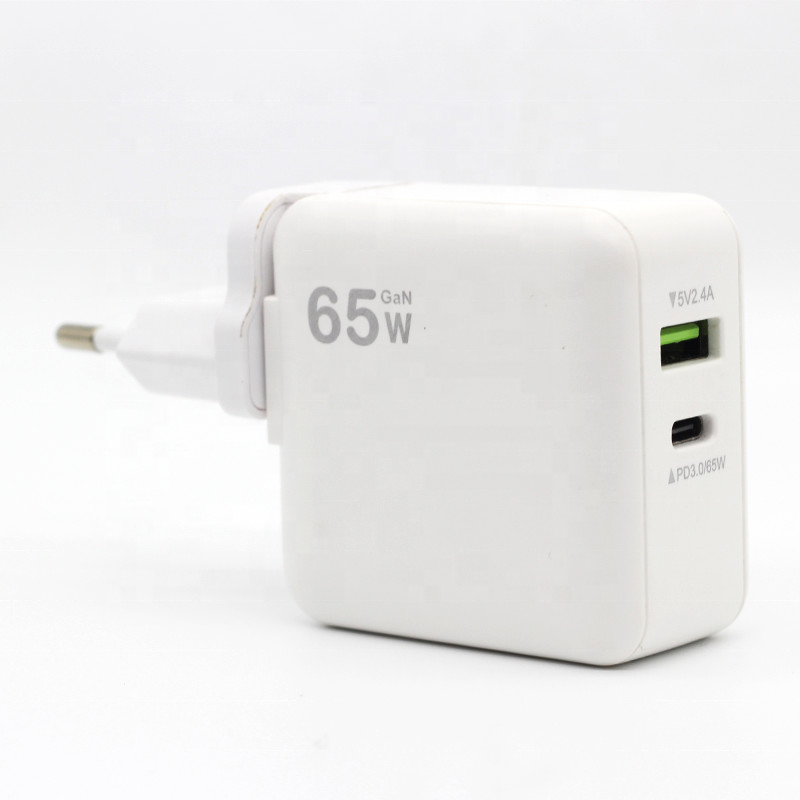USB 2.0. By default, the upper limit of power output current from the USB master device to the slave device is 500mA; When the main device is an adapter, the upper limit of its power supply capacity is increased to 1.5A, and the charging current is increased by 3 times. The method to distinguish the output current capacity of the main equipment is whether DP and DM are short circuited. If they are short circuited, the output current capacity is 1.5A. If they are not short circuited, the output current capacity is 500mA. The mobile terminal will adjust the charging current according to the DP and DM status.
In the traditional charging mode, if the charging current is to be increased, the output current of the adapter must be increased. If the output current of the adapter is increased, the USB cable will generate serious heat and cause serious power loss. There are two solutions. 1. Increase the diameter of the USB cable and reduce the overall resistance. 2. Increase the output voltage of the adapter. Compared with the increase of the USB cable diameter, the cost will rise a lot, and the user’s behavior is uncontrollable. Increasing the output voltage of the adapter makes the cost more appropriate. With the same output power, the higher the voltage, the smaller the current. This is the original intention of the high voltage and high current scheme. Current MTK: PE 2.0; PE3.0; Qualcomm: QC2.0; QC3.0; Type c:PD; Oppo: dual engine fast charging; Huawei: FCP uses this fast charging method;
The cost and efficiency problems will still be encountered in the actual use of high-voltage charging. The higher the output voltage of the adapter, the higher the withstand voltage requirements of the charging chip at the mobile phone end, which brings about cost problems. Therefore, MTK, Qualcomm and Typec have customized different voltage levels, including 5V, 9V, 12V and 20V. Mobile phone manufacturers choose different charging schemes according to their cost acceptance capabilities. Because the resistance of the USB cable actually used by the end user is uncontrollable, the voltage drop caused by the line loss is also uncontrollable after the voltage is set, so the fast charging protocol adds the function of automatic voltage regulation. The loss of the USB cable is compensated by increasing the output voltage at the adapter end. The initial fine tuning step value is 0.2V, and now it can reach 0.02V. In terms of conversion efficiency, the charging IC first used BUCK to reduce voltage, and then modified it to charge pump to reduce voltage. The conversion efficiency was increased to 97%.
Considering that even if the charging chip with 97% conversion efficiency is used, the mobile phone still has the problem of temperature rise under the condition of high current charging, so there is a low-voltage high current charging scheme. This scheme places the charging chip at the USB Chargers end and directly outputs the current to the battery. This mode is called direct charging. This mode is used by the VOOC flash charging of oppo and the SCP of Huawei. The advantage of this method is that the charging current is high and the heat of the phone is low. However, there are high requirements for the USB cable and the contact resistance of each terminal on the charging line. Only the equipment matching the phone can be used for charging.
Through the above comparison, it can be found that high voltage high current has more cost advantages than low voltage high current in terms of fast charging. On the basis of the above, what should we do if we want to continue to increase the charging power? One way is to increase the current at the battery end. Another way is to increase the voltage at the battery end. Increasing the current means that the resistance requirements of the transmission path will be further improved. Increasing the voltage is another way of thinking. Therefore, a dual battery series charging scheme is proposed to increase the overall charging power without changing the charging current.
Post time: Nov-24-2022





